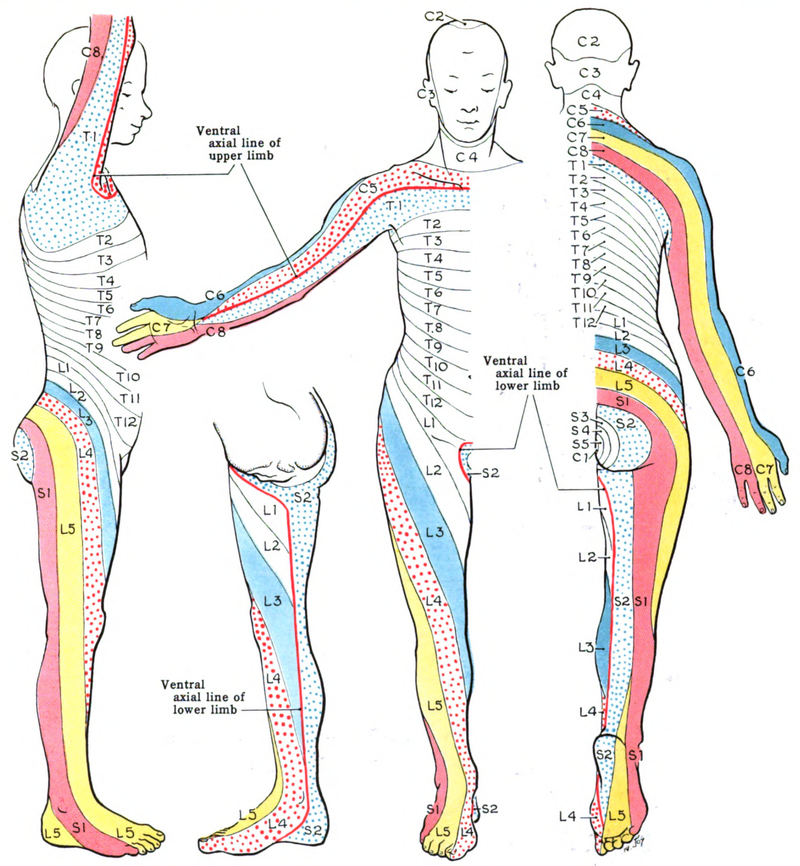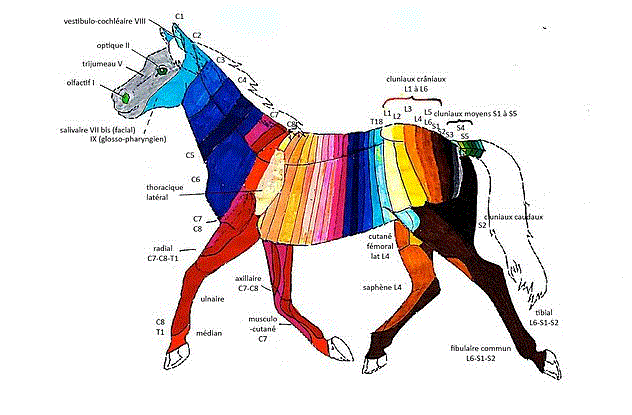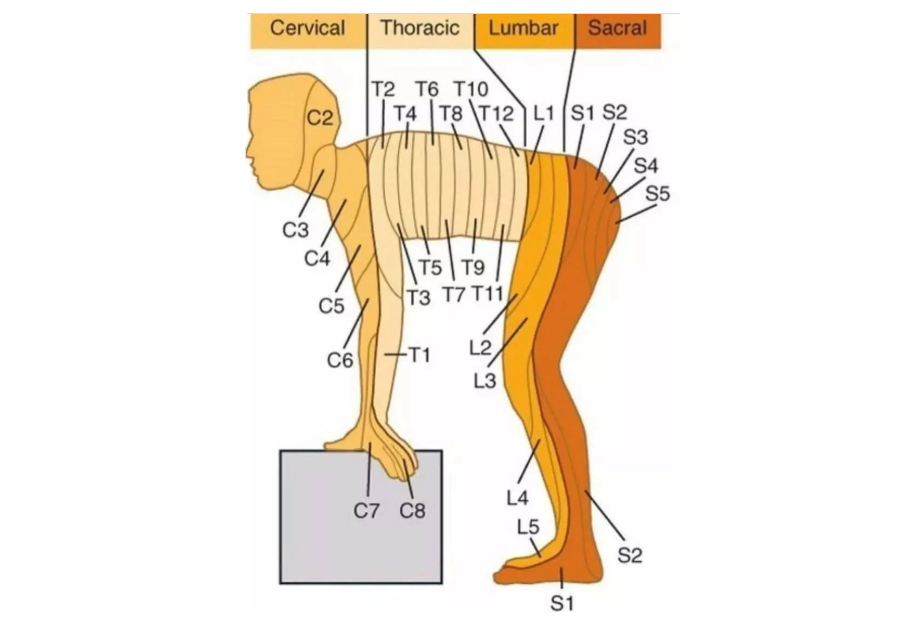Dermatome map

A dermatome map is a tool for localizing and understanding patterns of skin sensation linked to the spinal nerves.
Each dermatome corresponds to a specific spinal nerve root, and the map illustrates how these nerves distribute sensory information across the surface of the body. Clinicians use this map to interpret sensory symptoms such as pain, numbness, or tingling in a way that helps identify underlying nerve issues.
Humans have 31 pairs of spinal nerves: 8 cervical, 12 thoracic, 5 lumbar, 5 sacral, and 1 coccygeal. These correspond to 30 dermatomes (C1 has no sensory dermatome).
Understanding dermatomes helps diagnose nerve root problems. For example, if a patient reports tingling in the thumb and index finger, this may suggest compression of the C6 nerve root. By matching the area of altered sensation to a dermatome, clinicians can pinpoint which spinal level may be involved.
Testing sensation across different dermatomes can help assess the integrity of the nervous system in conditions like multiple sclerosis, spinal injuries, or peripheral neuropathy. Patterns of sensory loss may help define the extent and location of nerve damage.
In shingles (herpes zoster), a painful, blistering rash follows a single dermatome. This reflects reactivation of the virus in a specific sensory nerve, and recognizing the pattern helps confirm the diagnosis and guide treatment.
All mammals with spinal nerves have dermatomes. For example, horses have 41 pairs of spinal nerves, each associated with a dermatome.

And the dermatome map of the human body can make more intuitive sense when viewed with the body positioned like a quadruped.

Leave a comment